Flowers that look like fairies conjure up evenings spent on the porch or in the backyard as children, with the magic meeting of fireflies and the heady perfume of flowers emitting their last fragrance before dusk.
Flowers that look like fairies provide a window into a world of magic, a place where imagination and reality blend together and anything is possible. In the twilight, you could almost glimpse the fey folk dancing through the grass. Maybe you even imagined fairy shapes in flowers in your grandmother’s garden.
Flowers That Look Like Fairies
Flowers that look like fairies, such as Hollyhocks, Lenten Roses, Peonies, and Foxgloves are popular choices that add an element of whimsy to your flower bed.
Some of these plants such as Lupines thrive in hardy climates while others like the Ballerina Orchid love warmer, more tropical conditions. Whichever your choice, any flower that looks like a fairy is sure to bring a little magic into your garden.
Discover these enchanting flowers that look like fairies to add a whimsical touch to your yard or plant pot.
Also read:
1. Hollyhocks
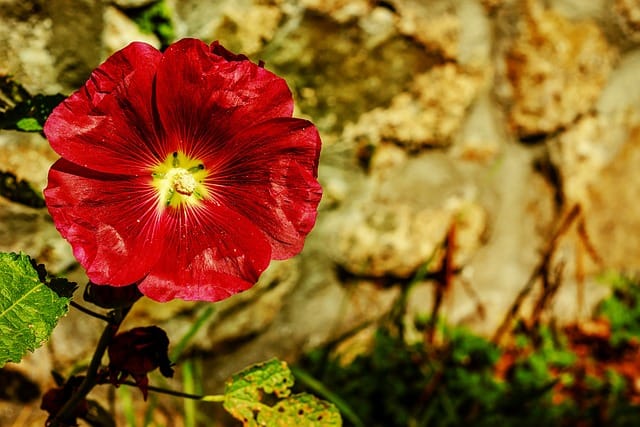
Hollyhocks not only represent the cycle of life as bees and butterflies flock to the fluffy central stamen where pollen drips onto the pretty pink bell-shaped flowers below.
In garden folklore, if you turn a hollyhock bloom upside down, the top resembles a fairy’s cap while the bell-like bottom looks like a flared skirt.
While hollyhocks are indigenous to southwest and central Asia, where many of the 60 species grow to over 8 feet tall, these big colorful flowers in white, pink, red, purple, and yellow shades can also live in various climates. In the United States, hollyhocks grow best in zones 3 through 8.
These biennial flowers take two years to mature to bloom. With their fairy-shaped bells and beautiful pastel colors, hollyhocks will make a beautiful addition to any fence, trellis, or wall.
2. Dancing Girls
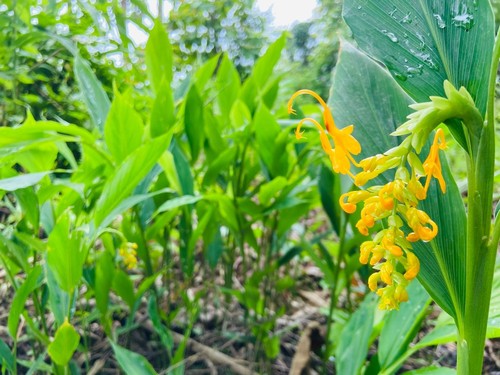
These pale pink and white flowers shaped like dancing fairies are sure to delight. They are also rare and difficult for even experienced and tenacious plant collectors to find.
Hailing from East Africa, these tiny flowers look like floral woodland dresses that can trail over trellises or hanging pots. Although petite at just one foot wide with half-inch flowers, Dancing Girls are fast rooters once they touch soil and thrive best when allowed to climb.
A fabulous choice for outdoor planters or an indoor hanging plant, Dancing Girls is one of those exquisite rarities that make you feel like the fairies really have come to stay.
3. Sweet Peas (Lathryus odoratus)
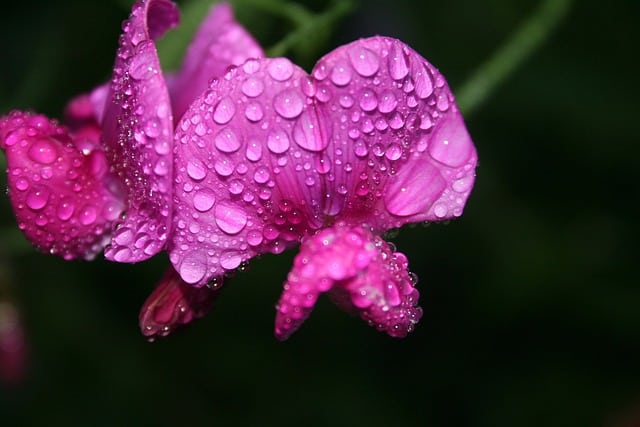
With curly tendrils among dainty flower clusters, Sweet Peas are a climbing plant that emits honey, orange blossom, and jasmine scents.
Sweet Peas’ ruffled petals in riotous shades of white, pink, rose, violet, blue, apricot, and crimson resemble tiny fairies with wings outstretched ready to take flight.
These magical and delicate little blooms are a perfect addition to any garden space where you want to make welcome and inviting for the fairies to come into your life.
4. Hellebore
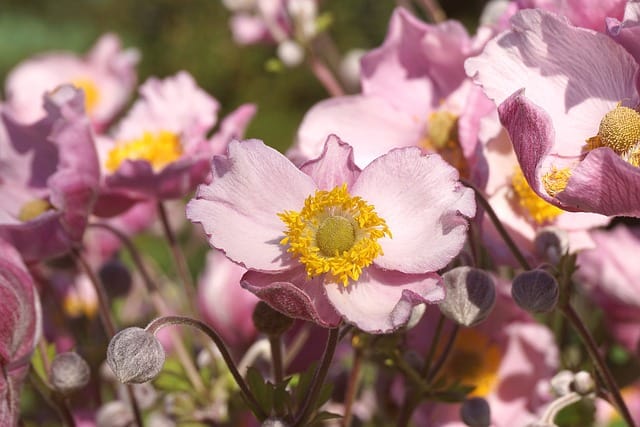
Since ancient Greek times, the Hellebore flower, also known as the Lenten Rose, has had magical and elemental connotations.
In ancient Greek mythology, Malampus of Pylos saved the King of Argos’ daughters from insanity caused by Dionysus by using the Hellebore plant.
In Christian plant lore, the flowers symbolize innocence and were used to ward off evil spirits. For some people, the saucer-shaped petals that grow in a ring of magenta, apricot, white, yellow, and crimson shades resemble a tiny garden fairy.
The beautiful, nodding flowers continue to grow and fade into green when they reach the end of their blooming period. In all their stages, the Hellebore or Lenten Rose is sure to make any human or pixie linger a little longer in the garden.
5. Bleeding Hearts

Beautiful but toxic to the touch, Bleeding Hearts is an herbaceous plant that also resembles a row of dancing fairies dangling from the plant’s delicate, bending stems. Part of the poppy family, Bleeding Hearts are native to Asia where they grow in damp, fertile forests, but came to North America and Europe in the 19th century.
The plant has pink curvaceous flowers on a stem that can grow up to 47 inches tall and 18 inches wide. With 20 flowers on each cluster, this plant provides rich nectar for bees, butterflies, and hummingbirds that are lured to its source.
Popular for its beautiful fairy flowers, Bleeding Hearts are an ornamental plant that requires minimal cultivation and is easy to grow. If you plan to add Bleeding Hearts to your garden, it’s best to find fertile soil that’s kept moist.
The plant also thrives in direct sunlight if you live in a cold climate. If you live in warmer areas, the plant prefers partial shade.
In the wild, this perennial plant will survive for up to two years. A deciduous plant, the Bleeding Heart will discard its petals and blooms when summer is over.
6. Peonies
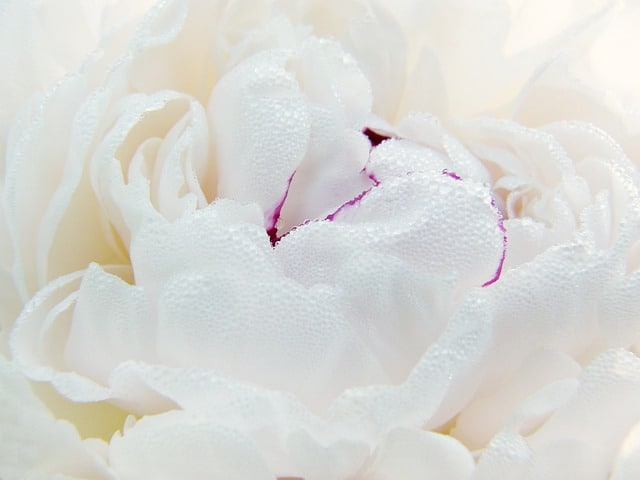
There’s nothing that announces spring quite like a pale pink pop of color from the boisterously pink ruffled Peony.
These big, showy, gorgeous blooms nod and sway like fairies dancing. If you pluck a Peony flower and turn it upside down, the layers of petals resemble a cupcake gown with flouncy skirts fit for a fairy ball.
These lovely flowers are not only said to attract good fortune, but their longevity makes them a popular wedding flower and is sure to bring fairies into your life.
In most areas, Peonies start blooming in April, May, or June. If you have a tree peony, you can expect to see blooms start around Mother’s Day. Herbaceous species will flower out starting around Memorial Day, while intersectional will appear in the month of June.
Enjoy these blooms with any variety for a full seven weeks. Since they are big and long-lasting, these are perfect to cut for a vase of flowers or to spice up your garden with heavenly perfume during spring and summer.
7. Lupines

Whether you find Lupines in the woods or plant these conical beauties in your yard or garden, spotting these flowers will look like you’ve stumbled into a magical fairy ring.
Known for their distinctive spike flowers and sweet scent, Lupines have many leaves shaped like fingers on a hand with pea-shaped blossoms carried in cone shapes at the top of the stem. According to The New Southern Living Garden Book, that’s what gives these flowers a unique look.
While bees love to buzz among the flowers that stand tall like fairies holding a gathering, deer, fortunately, tend to leave these tall, slender plants alone. Create a perfect forest for the fairies right there in your garden with these nodding beauties that can grow from one or two feet tall all the way up to five feet.
8. Strawberry Sundae Hydrangea
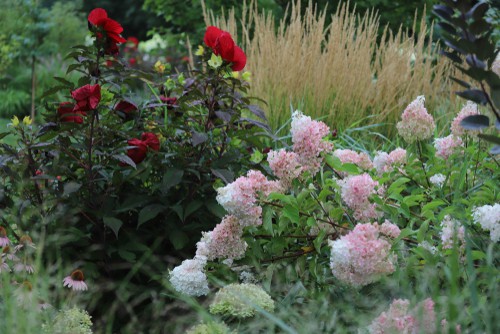
Chances are even if you’re an avid gardener, you might not have encountered the Strawberry Sundae Hydrangea. That’s because it’s a new variety that flower connoisseurs developed from the Vanilla Strawberry Hydrangea.
With swaying, cone-shaped blooms of soft pastel flowers, the Strawberry Sundae Hydrangea looks like fairy queens in long dresses.
With creamy clustering flowers that bloom in the warm midsummer, the plant’s overblown cones of dense clustered flowers slowly fade to pale pink and rosy, rustic pink tones as the temperature cools. By autumn, the flowers will transition until they turn a dark strawberry red.
As the South’s favorite flower, this variety of hydrangea is a lure to both people and fairies with its stunning summer show.
9. Ballerina Orchid (Caladenia melanema)
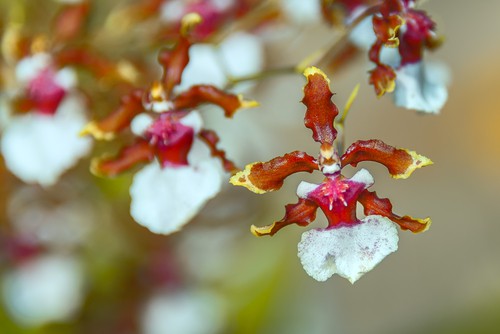
Small, delicate, and hailing from Western Australia where it grows exclusively near Lake Altham southeast of Perth, the Ballerina Orchid looks both like a ballerina or a fairy dancing away in the garden with raised arms and wings on display.
A terrestrial spider orchid, the Ballerina Orchid tends to grow alone or in groups of plants. With flowers that resemble a tiny dancing pixie figure, they come in shades of cream petals with maroon marks.
Expect blooms to appear from August through early September. If you’d like to plant a Ballerina Orchid to bring some fey magic into your home or garden, these delicate plants enjoy an environment that mimics their natural habitat.
In the wild, these spider orchids grow along the Australian sand flats among white sand and clay loam that lies under Eucalyptus trees and low, scattered shrubs.
10. Foxglove
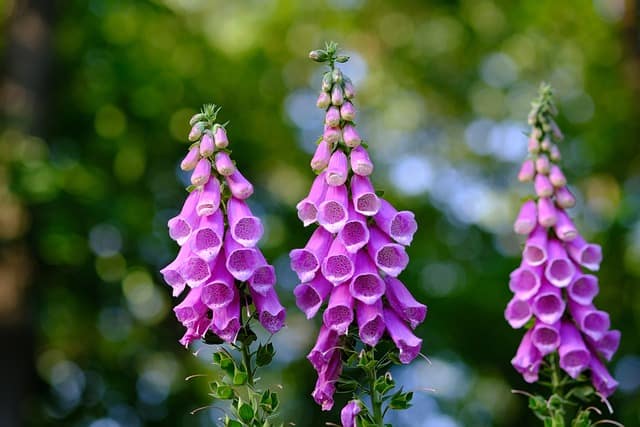
Since the Renaissance, the Foxglove has enjoyed popularity for its whimsical shape that looks like fairy skirts in gardens across Europe, the Mediterranean, and the Canary Islands.
Also known as “Digitalis” from the Latin word for finger, the Foxglove is named for its shape which resembles a bell skirt or a gloved finger.
Capped by a tall, pendulous bell-shaped bloom, a Foxglove produces white, yellow, or purple flowers that have distinctive marks inside. While Foxgloves are known for some heart-healing medicinal properties, the plant is generally regarded as toxic.
These lovely fairy like flowers love acidic soil, partial sunlight, or deep shade, and can exist in a garden that mimics the open woods, moors, cliffs, rocky hills, woodland clearings, or hedgerows that are sure to add a little magic to your life.
Frequently Asked Questions
What Flower Looks Like a Fairy?
Many flowers look like fairies, including lupines, dancing girls, bleeding hearts, and peonies. But the foxglove flower, also known as digitalis, creates an outstanding image of a fairy.
With their bell-shaped flowers that come in white, yellow, purple, or pink, foxgloves are aesthetically pleasing. Being in a garden filled with foxglove flowers can create the illusion of being surrounded by fairies. Unfortunately, the foxglove plants are poisonous and shouldn’t be ingested.
What is the Fairy Plant?
Fairy plants are beautiful, smaller varieties of popular houseplants. Despite being small, the fairy plant looks great in terrariums and other containers. In addition to being wonderful houseplants, fairy plants make the perfect gift for family members and close friends.
Caring for these plants can be slightly demanding due to their delicate nature. They prefer high levels of humidity and bright, indirect sunlight. When this small plant grows out of its container, pruning or transplanting it to a bigger space is necessary.
Are Fairy Roses Real?
Yes, fairy roses are real. They’re one of the rose species known as Rosa ‘the fairy’, which was presented by Ann Bentall in 1932. Popular for their steady blooming through their growing season, the fairy roses produce small flowers in white and pink. Having a uniquely beautiful appearance may have earned the fairy roses their name.

Hey, I’m Lisa and I’ve been an avid gardener for over 30 years. I love writing, talking and living in the garden! Feel free to connect with me on my socials below

